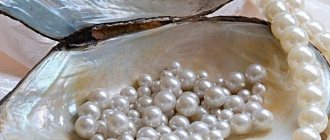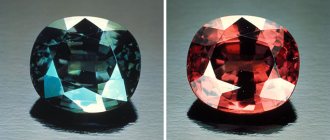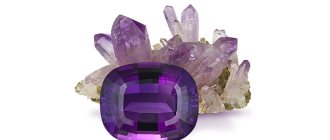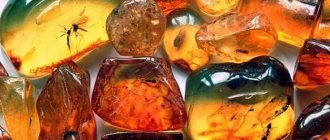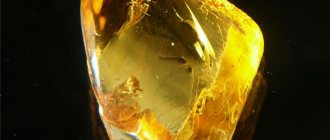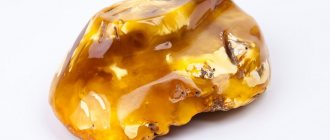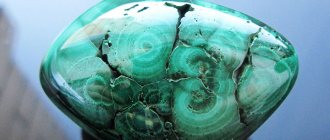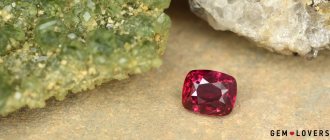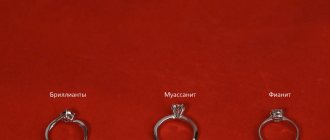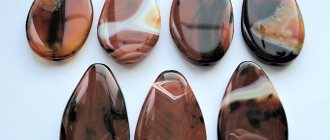During a holiday in Turkey, Russians are always offered shopping trips - to shopping centers and factories, where they can buy high-quality furs and leather, home textiles... And they will also definitely be offered a trip to jewelry workshops. Do not refuse - here you will get acquainted with sultanite - a unique stone that is mined in the only place in the world - in the high mountains of Turkey.
The stone has become known as a jewelry material quite recently. Although the first mentions of the Sultan are found in ancient eastern chronicles. Only padishahs and members of their family had the right to wear items with sultanite. They also used sultanite to check the authenticity of gold. It was believed that next to a fake the stone dulls, but next to the noble metal it begins to shimmer and shine.
Treasures of the Anatolian Mountains
Sultanite has a close relative - thanatarite, which is mined in the Urals. This stone is named after the Russian geologist Joseph Thanatar. Both stones are particularly fragile and crumble into crumbs if moved awkwardly. Therefore, processing it is a special task.
The main difference between the Turkish sultanite and its Russian “relative” is the variety of colors and sizes. Only here is a stone of such a size mined that it can be processed and used for jewelry. The popularity of Turkish sultanite came only in 1977, when an article about the properties of this stone was published in the scientific journal Gems & Gemology.
Varieties of this mineral are now found in Russia, China, Azerbaijan, the USA, Hungary and Uzbekistan. But those stones that can be used in the jewelry industry are only found in the Ilbir Mountains in the eastern part of Turkey.
Interesting fact: the Turkish government keeps all information about sultanite - the volume of reserves, mining methods, etc. - secret.
How to distinguish real sultanite from artificial
If you put artificial and natural sultanites next to each other, it will not be easy to see the differences with the naked eye. Hydrothermal sultanites are used as an artificial analogue in the jewelry market - visually they are as close as possible to natural minerals, and their optical properties are not inferior to natural specimens.
- When purchasing jewelry, pay attention to the tag, or more precisely, to the information about the characteristics of the stone. Hydrothermal specimens receive about.
- Synthetic stones are brighter, and when the lighting changes, they change color more than natural ones (for example, a radical change in color from green to red or orange is possible).
- Synthetic crystals do not have microcracks or mineral inclusions.
How artificial sultanites are made
Hydrothermal stone is not a cheap fake made of glass, but a real analogue of natural diaspora. These specimens are created in the laboratory; natural raw materials are used to grow them - pieces of natural minerals. Hydrothermal stones demonstrate the properties of real sultanites - transparency, shine, color, structure and the famous “chameleon effect”, but a professional will be able to distinguish a natural stone from an artificial one.
Among the advantages of hydrothermal sultanite are its affordable price and ease of processing. When most fragile natural gems crack and crumble, artificial crystals withstand cutting and polishing with dignity.
Magic shimmers
Sultanite can be called a chameleon stone. It has a unique feature - it changes color depending on the lighting. The same stone can be green, brown, red and golden yellow.
In daylight, it shimmers with all shades of green: from delicate pearlescent colors to richly herbal and deep emerald.
In the light of an incandescent lamp, the stone becomes either golden yellow or soft straw. In the light of candles or a fireplace, sultanite is transformed, darkening to deep chocolate and coffee colors. In dim light, the stone plays with orange hues.
Occasionally there are sultanites with pink and even blue shades, but these colors are not basic.
Turkish sellers in jewelry stores like to demonstrate how a stone changes color: first they will illuminate it with a lamp, then they will go outside with you, then they will ask you to look through the stone at the sun. A whole performance! This game is like a trick - the sultanite looks new every time, changes its light, as if in a fairy tale.
What does natural sultanite look like?
The color palette is diverse - chromium ions give a green tint, manganese oxide gives a red or pinkish color, iron gives yellow, brown and brown tints. The mineral is rarely bright, the colors are mostly soft and pale. Typically, sultanites are pure and transparent; there are even almost colorless crystals.
Natural specimens are olive green; depending on the type and brightness of lighting, they change color to orange-green or pinkish-green.
Sultanite has a pronounced alexandrite effect - it changes color depending on the lighting. Thus, under artificial lighting, olive and blue-green notes appear, and under the sun's rays, pink and lilac shades are visible. The shine of the stone is glassy, with pearlescent reflections.
Previously, only yellow gold was used for the sultanite setting; today, white gold and silver are increasingly used - the cold shine of these metals favorably emphasizes the beauty of the diaspora.
How can a layperson determine whether sultanite is real?
It is very difficult to distinguish natural sultanite from its synthetic counterpart with the naked eye and without appropriate qualifications. Therefore, non-professionals can rely on the price of the stone, the opinion of experts and the reputation of the store.
- Buy jewelry only from sellers who can provide a certificate of quality for it.
- The price of diasporas can reach the price of diamonds and even exceed it, because diasporas are very rare and their extraction is difficult. The cost of 1 carat of sultanite starts from $140.
Sultanite – a stone for creative people
Many gemstones are known to have magical properties. Who is Sultanite suitable for?
Firstly, this stone is for creative people; it awakens inspiration, gives emotions and leads to extraordinary solutions to problems.
Secondly, sultanite relieves depression, lifts the mood, gives fun and bright joy.
Thirdly, it is a powerful amulet against the evil eye, damage, disease and scammers.
Fourthly, it helps to move towards the intended goal. If you have something in mind, he will help bring your ideas to life.
The stone also knows how to warn its owner from troubles. If the sultanite cracks for no reason (and this happens), then trouble will come to the house and you need to prepare for serious problems.
It is believed that the silver frame of the stone greatly increases its magical properties.
How to distinguish natural sultanite from a fake
To meet demand, natural sultanite is not only replaced with synthetic, but also counterfeited - instead of the iridescent chameleon stone, they are trying to sell fakes made of glass or even plastic. Of course, the appearance of such specimens is very far from what a natural gem looks like. But anything can happen: sometimes buyers trust sellers and are ready to buy even a crude fake.
There is a way to help recognize a fake. Take a photo of the stone you are going to buy and look at the photo. If the stone has a clearly defined color in the photograph, then this is a fake. A real crystal does not have one specific color - it shimmers in different colors.
When you are looking at jewelry in an untrusted store or souvenir shop, compare the model you like with others - if all the sultanites look the same, without defects and uniform color, then they are probably fakes.
Natural sultanite is a piece stone; it is not supplied in batches of the same fraction. Finding several minerals of the same size and color for decoration is incredible luck, which is why diaspores are most often used for pendants and solitaire rings. For earrings or necklaces with many identical inserts, synthetic sultanites are usually used.
More expensive than diamonds
Natural sultanite is incredibly expensive. Its price tag is higher than the best diamonds! This is explained by its rarity and small natural reserves.
Therefore, Turkish and Russian chemists created an analogue of the stone - hydrothermal sultanite. They categorically refuse to call it artificial, because the stones are grown in full compliance with all natural conditions, only in laboratory conditions. By the way, it is almost impossible to distinguish between hydrothermal stone and natural one. Even an experienced jeweler can make mistakes. Therefore, Turkish legislation requires that a tag be attached to the stone indicating where and how it was mined or manufactured.
By the way, not only in price, but also in its purity, sultanite is close to diamonds - it never contains foreign inclusions, even in the form of turbidity or dust.
Stones are very difficult to process due to their fragility. It is officially recognized that 97.5% of sultanite is lost during processing. Can you imagine how rare they are in jewelry? Only 2% of sultanite ends up in gold or silver settings.
The cost of sultanite averages $200 per carat. Therefore, if a jewelry factory offers you inexpensive sultanite, you can be sure that its homeland is a laboratory and not the Anatolian Mountains.
In any case, buy the sultanites. Even hydrothermal ones. These stones are so beautiful that they make you fall in love once and for all.
Description and Application
Sultanite stone is a type of diaspore mineral and is hydrated alumina. It is used only for jewelry purposes. It is interesting that when extracted from the depths, in most cases the gem spontaneously crumbles, but the remaining core is real corundum with high density and hardness. This residue is used by jewelers.
There are quite a lot of diaspora deposits on our planet, but there are few sultanite deposits left. It is believed that its production will soon be exhausted. In Russia, the mineral is mined in the Urals; there are also deposits in the Middle East, the USA and China. But the crystals that are found in the countries are too small and are of no interest to jewelers. The only high-quality gem is mined in Turkey. The Anatolian Mountains are a real treasure trove of this stone.
The use of the mineral was first mentioned in eastern scriptures. Turkish sultans wore jewelry made of shiny gems and decorated their clothes and household items with them. Perhaps that is why the stone was called “sultanite”. There are other names for the gem, such as:
- ferruginous kyanite;
- Thanatarite;
- zultanite
The characteristics of the mineral are not unique in any way from other gemstones. However, its main feature is its ability to change color. In nature, the mineral has different shades. The color depends on the presence of impurities in the stone. In the light it begins to play, shimmering from one shade to another.
Under different lighting conditions, the crystal can become either light green or amber-yellow, then turning into red-brown.
MASKOM gold earrings with sultanites (go to the SUNLIGHT catalogue)
The price of real mineral is high. For example, for a ring with a 1-carat sultanite you will have to pay at least $300. However, a gem of this size does not allow you to enjoy the changeability of color. The cost is determined not only by the rarity of the stone, but also by the elegance of its framing. This mineral does not tolerate being surrounded by low-grade metals. If sultanite is inserted into cheap material, it will begin to fade. This property of the stone has long been used to determine the quality of precious metals. The gem requires only gold or silver frames. Sultanite in silver or gold will reveal itself in full force.
Due to its rarity and high cost, the gem is available only to wealthy people. Therefore, a synthetic analogue of the mineral is most often found in mass sale. Hydrothermal sultanite is produced in many countries, including Russia. Moreover, in our country, to produce a synthetic analogue of the mineral, they use a unique material called nanostal, created by Russian chemists.
